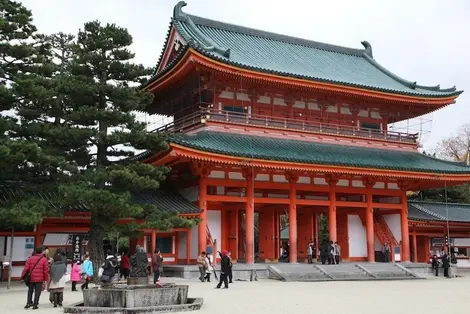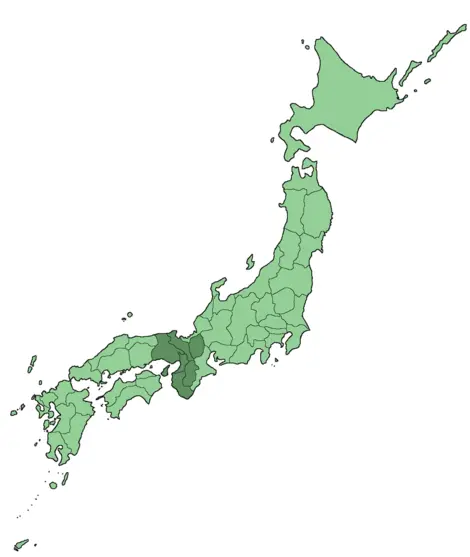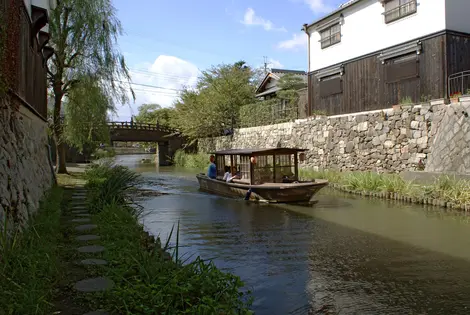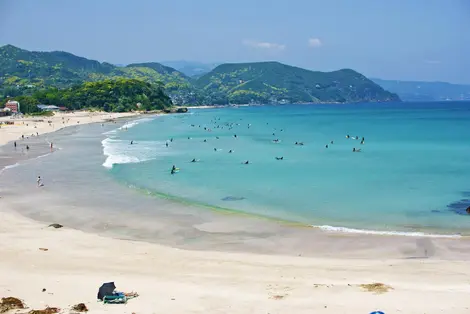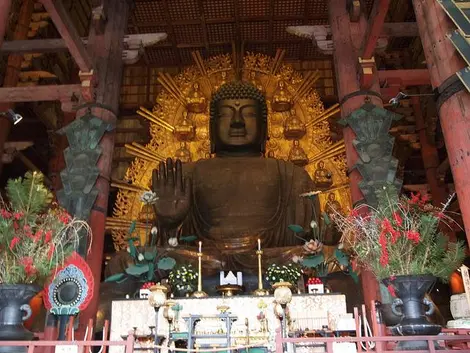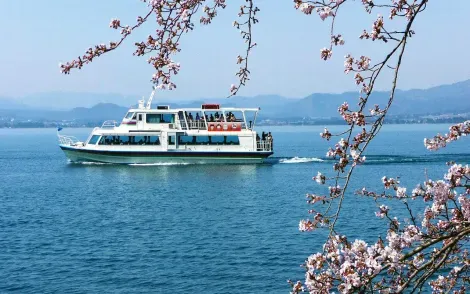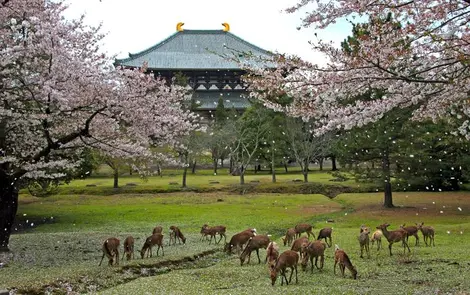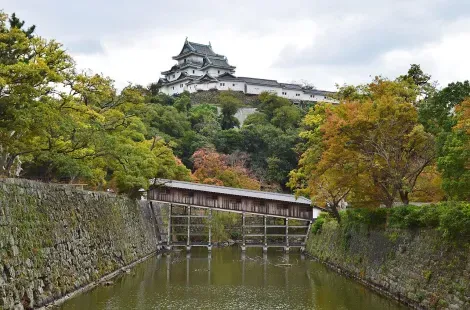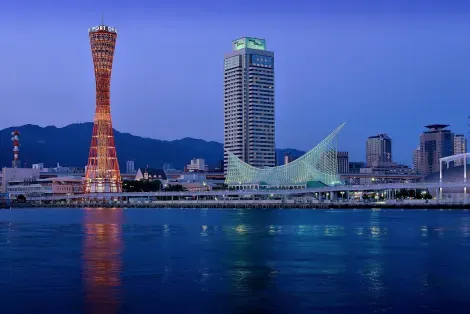The Kansai region 関西地方
- Published on : 01/03/2020
- by : S.V.
- Youtube
The Kansai region, the cultural and spiritual heart of Japan
At the center of the political and cultural life of Japan for more than 1000 years, due to the presence of the ancient and illustrious imperial capitals, Kyoto and Nara, the Kansai region enjoys a history and heritage like no other. A stay in the Kansai is a must during any visit to Japan; a multifaceted region offering visitors both the discovery of its many Unesco World Heritage treasures and the urban excitement of cities like Osaka and Kobe.
Where is Kansai located?
The Kansai region has more of a cultural and historical unity rather than a real administrative entity. This is clear in the sometimes floating geographic division which comes to fix its limits. According to sources and definitions, the Kansai (or Kinki) region has six or seven prefectures, or even in some cases eight, nine or ten prefectures! The most commonly accepted composition remains as follows: Kyoto Prefecture, Osaka Prefecture, Hyogo Prefecture, Nara Prefecture, Shiga Prefecture and Wakayama Prefecture. The seventh prefecture frequently integrated into the perimeter of Kansai is Mie. Considered part of Kansai in the early 20th century, Mie Prefecture has seen its position fluctuate over time and thus be linked to the Chubu region. The prefecture of Mie even addresses the question of its regional connection on its website, concluding that Mie belongs to both the Kinki region and the Chubu region! In the widest perceptions of Kansai, the prefectures of Fukui, Tokushima and Tottori are also included.
In its configuration with six prefectures which we will retain here, the Kansai is bordered to the north by the Sea of Japan, the Inland Sea of Seto in its southwestern part, the Pacific Ocean to the south of the Kii Peninsula and encompasses l is the entire largest freshwater lake in the archipelago, Lake Biwa. With a total area of more than 33,000 km², the region offers a wide variety of landscapes and incorporates no less than three national parks: Yoshino-Kumano National Park (61,406 hectares), San'inkaigan National Park (8,783 h) and Setonaikai National Park (66,934 h).
Kansai, Kinki, Kinai: three terms for the same region
It seems important to us to shed a special light on the name of this region of the country. It is not uncommon to find three different terms: Kansai, Kinki and Kinai; all designating or relating to this geographical area.
The designation "Kinai" results from the establishment of a new territorial division of Japan at the end of the Asuka period (538-710). Meaning "around the capital", Kinai then designated one of the eight administrative regions of the imperial system recently created and consisted of the former provinces of Yamato, Yamashiro, Kawachi, Settsu and Izumi.
The term "Kinki", derived from "Kinai", was popularized only during the Meiji era (1868-1912). As for the term "Kansai", literally "west of the border," he was referring initially (around the 8th century) to an area west of Osaka border post. Although the names "Kansai" and "Kinki" originally had a different meaning, the two terms are used interchangeably today.
Another word has appeared more recently to designate the particularly dense and highly urbanized area formed by the cities of Osaka, Kobe, Kyoto and their surroundings: the Keihanshin. Composed of the three most populous cities in the Kansai region, this metropolitan area has more than 19 million inhabitants!
Kansai culture
Whatever the name chosen, the region remains the cradle of traditional Japanese culture. Remember that it was in Kyoto that the traditional dramatic arts, namely Noh and Kabuki, were created and performed for the first time. As for bunraku, puppet theater, it was born in the city of Osaka. It is also in Kansai, more precisely around Kyoto that the practices of the tea ceremony called chanoyu and ikebana, the art of floral composition, appeared.
Even today, the region has a very strong footprint. Thus its dialect Kansai-ben remains the most widespread in the country since it is used by 20 million Japanese. Another characteristic of the region, and not least, remains to be highlighted: its cuisine. Whether it's kaiseki cuisine, traditional gourmet cuisine from Kyoto or "street food" from Osaka, the many culinary specialties of Kansai are sure to delight your tastebuds!
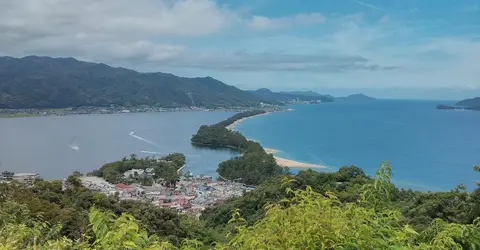
Amanohashidate, the point on the sea
xaday
An exceptional heritage
Lovers of remarkable heritage, Kansai is a destination made for you! The region has more properties inscribed on the Unesco World Heritage list than any other region of Japan. The reasons for this is due to its unique role in the history of the country and the remarkable preservation of sites and monuments partly spared by wars and natural disasters. Discover these 6 UNESCO World Heritage sites on your trip:
Himeji Castle
Buddhist monuments in the Horyu-ji region
Historical monuments of ancient Kyoto (cities of Kyoto, Uji and Otsu)
Historical monuments of ancient Nara
Sacred sites and pilgrimage routes in the Kii mountains
Mozu-Furuichi kofun set: burial mounds of ancient Japan
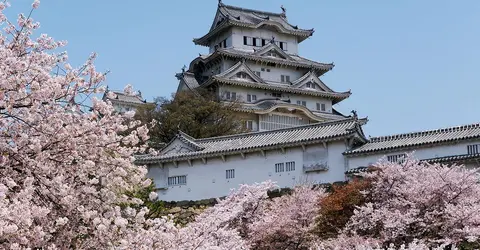
Himeji Castle in Spring
Wikimedia Commons, 663highland, https://creativecommons.org/licenses/by-sa/3.0/deed.en
- Also read: UNESCO World Heritage Sites in Japan
Unmissable places to visit in the Kansai or Kinki region
Kyoto Prefecture :
- Kyoto has an exceptional heritage and its impossible to make an exhaustive list of sites and places to visit. The city has more than 1000 Buddhist temples and 250 Shinto shrines! Consult our Kyoto guide to discover the treasures and activities offered by the former imperial capital.
- Uji, south of Kyoto, renowned for its excellent green tea: Byodo-in temple, Ujigami-jinja, Uji-jinja.
- Amanohashidate, one of the three most beautiful views in Japan.
Osaka Prefecture:
- Osaka, the largest city in the Kinki region and the third largest city by population in Japan
Nara Prefecture:
- Nara, the first permanent capital of Japan
- Mount Yoshino, famous for its thousands of cherry trees
- Asuka, the first known capital of Japan: Ishibutai kofun tomb, Asuka-dera temple, the Man'yo cultural complex, Asuka historical museum
- Sakurai: Hasedera temple
Hyogo Prefecture :
- Kobe, port city
- Himeji: Himeji castle, Koko-en garden
- Kinosaki, a pleasant seaside resort
Shiga Prefecture :
- Omihachiman, ancient city of merchants and warriors
- Hikone: Hikone Castle
- Otsu: Enryukiji temple, Ishiyama-dera temple, Mii-dera temple
- Lake Biwa
Wakayama Prefecture :
- Mount Koya and its temples: Danjo-Garan, Kongo Sanmai-in, Kongobuji, Nyonindo, Okunoin cemetery
- Kumano Sanzan shrines: Kumano Hayatama Taisha, Kumano Hongu Taisha, Kumano Nachi Taisha
- the white sand beach of Shirahama
- Wakayama Castle
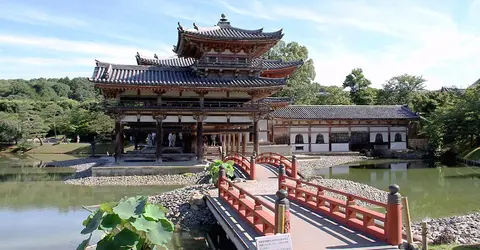
The Byodo-in temple in Uji, near Nara.
Christian Junker
How to get to the Kansai region
By plane :
- Kansai International Airport (KIX), southwest of Osaka. Established on an artificial island in Osaka Bay, it is the main gateway to the region. A hundred destinations around the world are served by 86 airlines from this airport.
- Osaka International Airport (ITM), also less formally known as Osaka Itami Airport, is located in the northwest of the city. Contrary to what its name might suggest, the airport only offers domestic connections.
- Kobe Airport, open since 2006, serves nine domestic destinations: Tokyo, Sapporo, Sendai, Ibaraki, Matsumoto, Izumo, Kochi, Nagasaki, and Kagoshima.
By train :
- The Tokaido Shinkansen line, the busiest and oldest high-speed line in the country, linking Tokyo to Osaka (taking between 2:30 and 3 hours). It provides connections to Maibara, Kyoto and Shin-Osaka stations.
- The Shinkansen Sanyo line connecting the city of Osaka to Fukuoka, on the island of Kyushu serves the stations of Shin-Osaka, Shin-Kobe, and Himeji.
Another high-speed line will serve the Kansai in the coming years. Now under construction, the Shinkansen Chuo line between Tokyo and Osaka will see maglev trains (magnetic levitation trains) at over 500 km/hour. To take advantage of this little gem of technology, you will need to be patient; the delivery of the Nagoya-Osaka section is not planned until 2045! As for the other railway lines, operated by different railway companies (JR, Hankyu, Kintetsu and Keihan), they make it possible to easily connect the major cities (Nara, Kobe, Kyoto, Osaka) and the main points of interest of the region between them.





